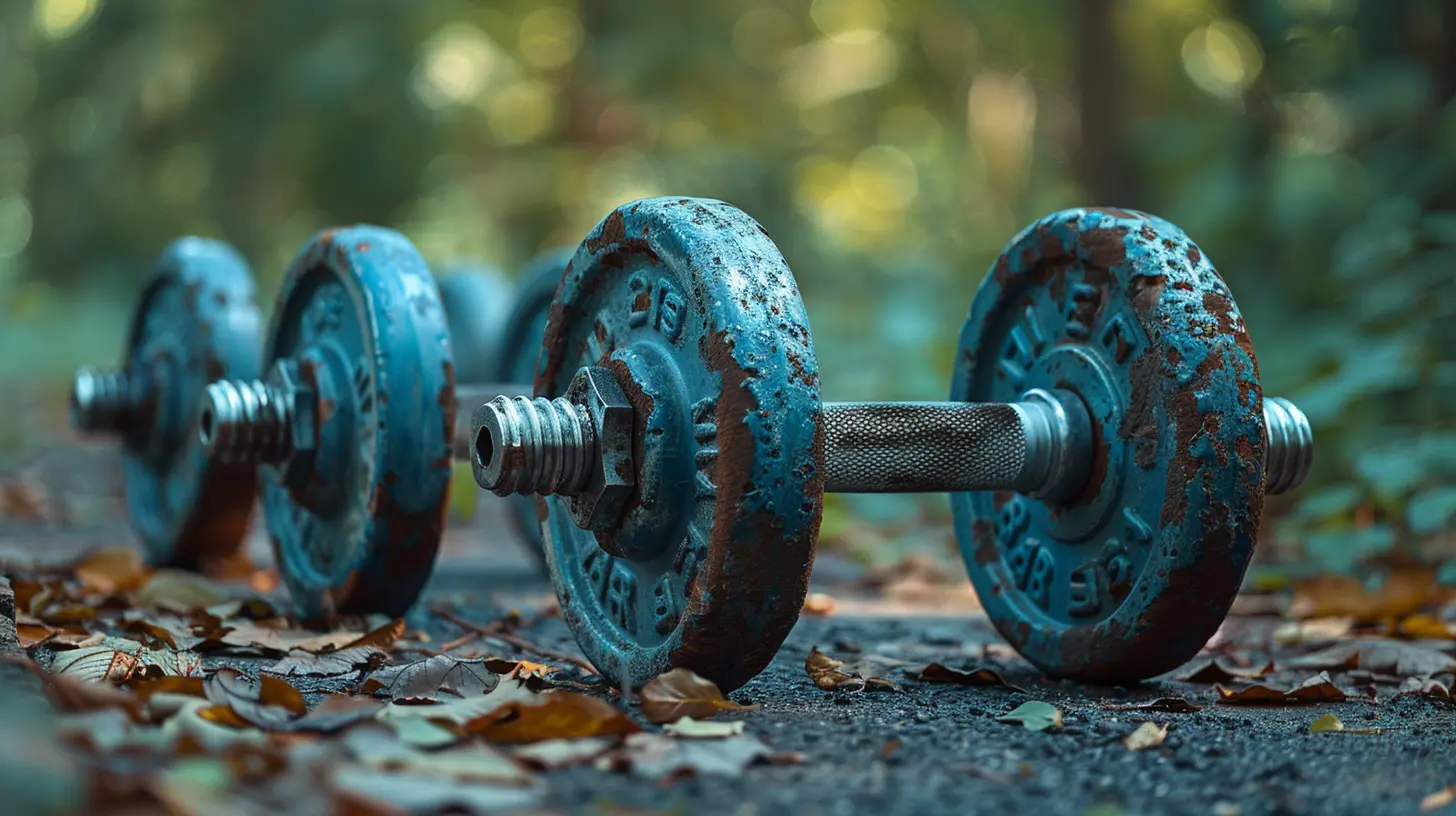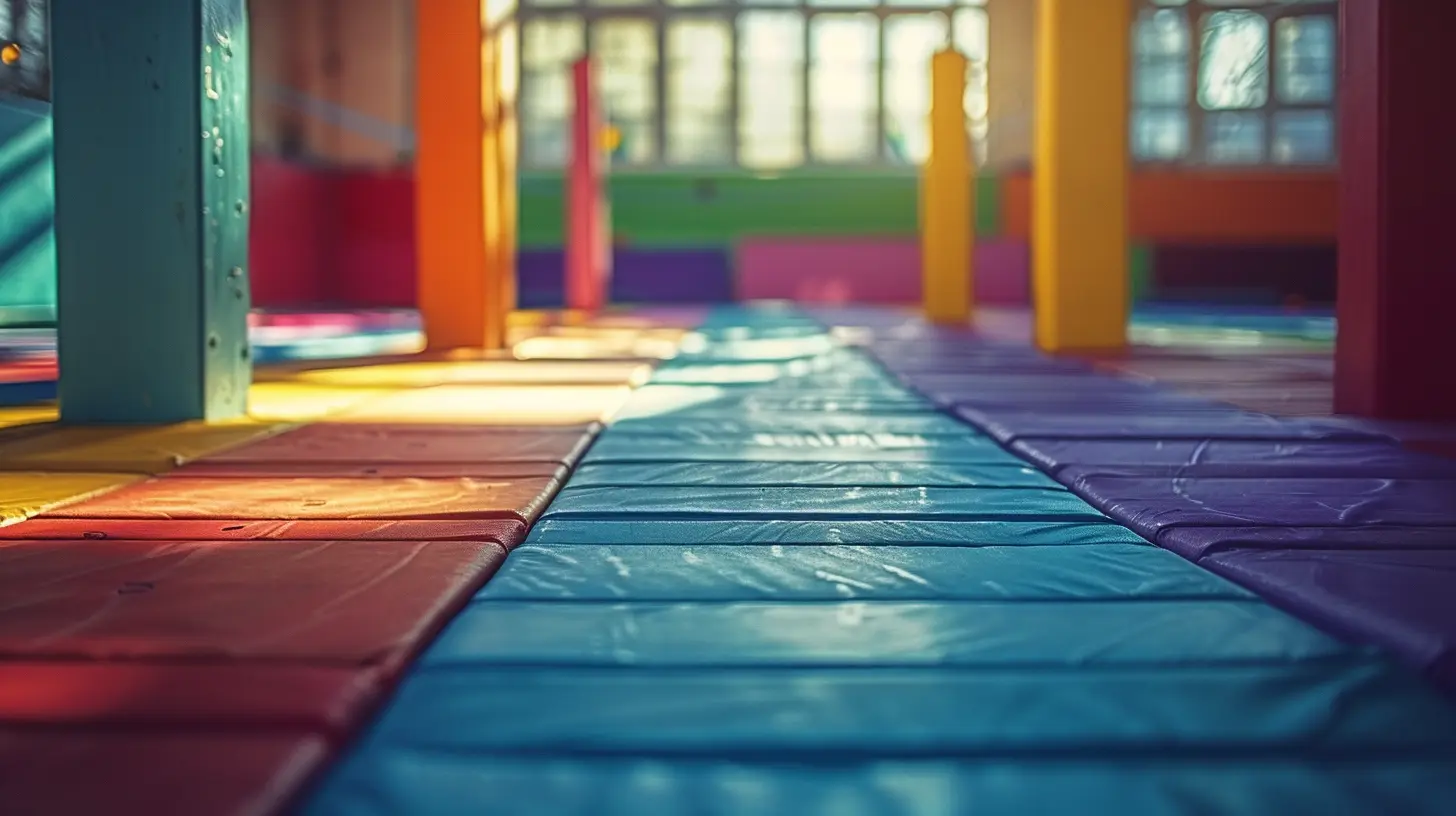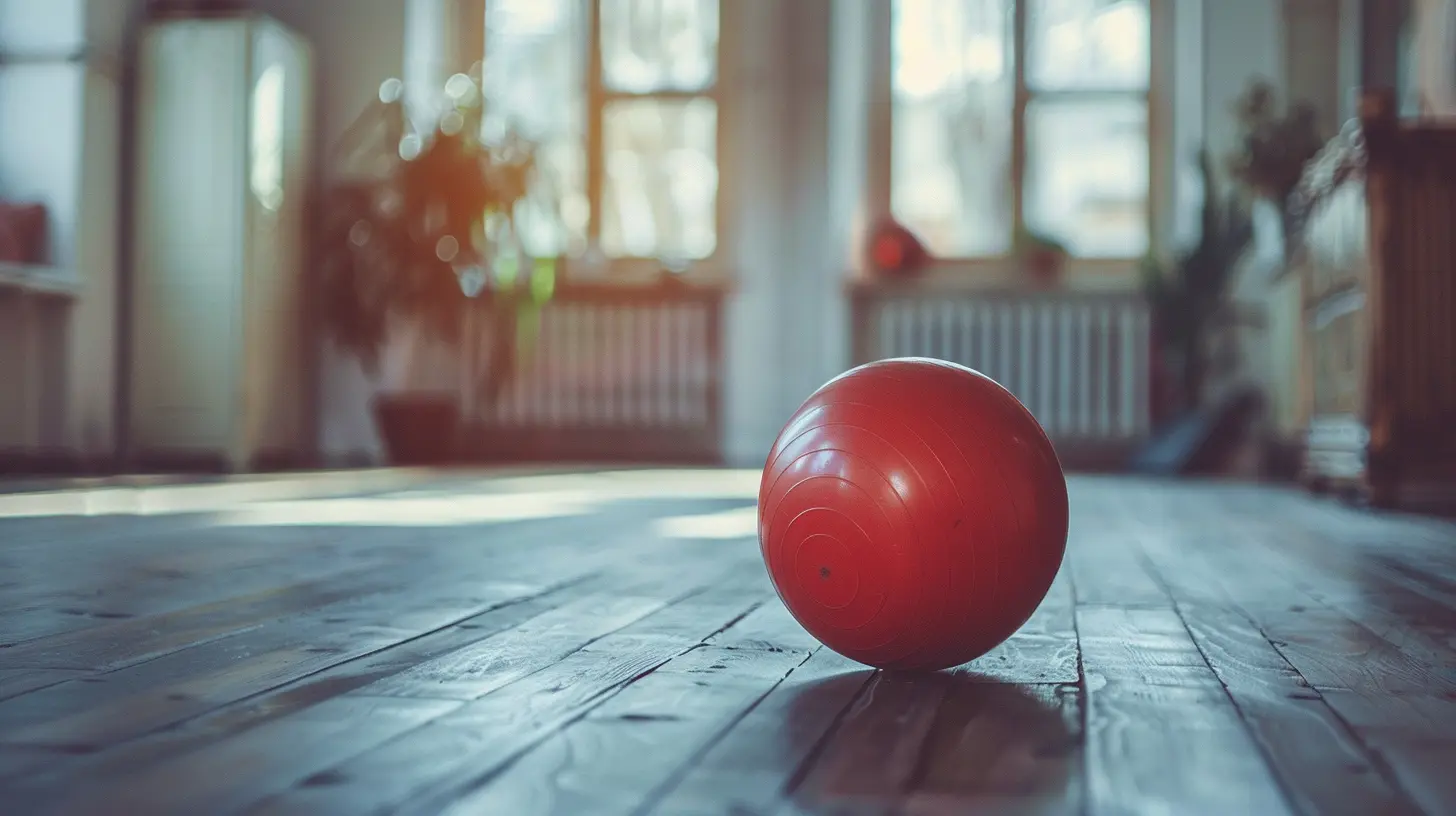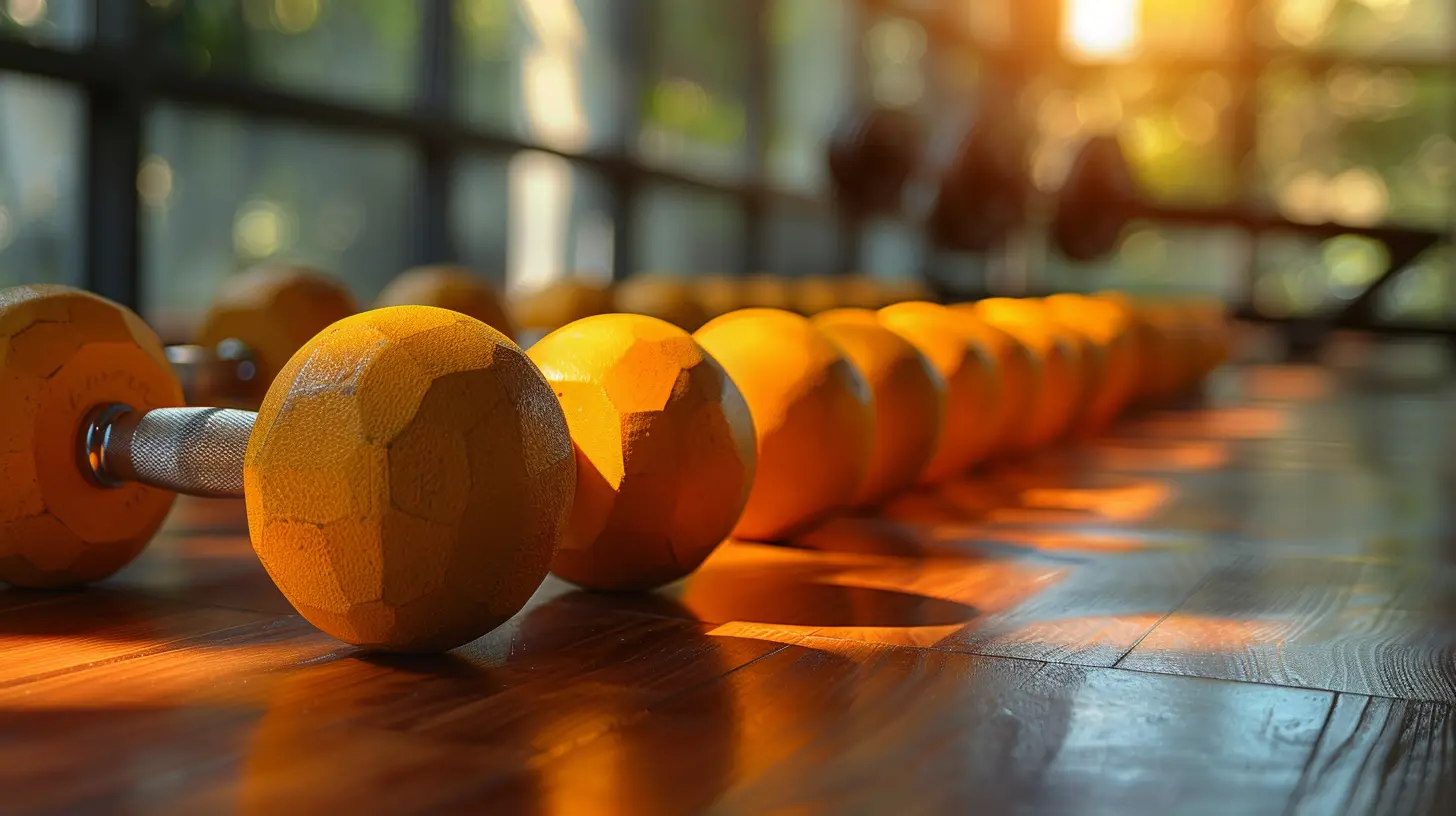The Role of PE in Supporting Positive Body Image
30 November 2024
Body image is a huge deal nowadays, isn't it? With social media, TV shows, and magazines constantly showcasing what society deems "the perfect body," it's easy for anyone—especially young people—to feel insecure about their appearance. But here's the thing: physical education (PE) can be a game-changer when it comes to how we see ourselves.
In this post, we’re going to dive into how PE can actively support and foster a positive body image, especially for students. We'll explore what body image really means, how physical activity influences it, and why PE classes can be an oasis in the desert of body negativity. Ready? Let’s jump in!

What Is Body Image?
Before we get into the nitty-gritty, let’s clarify what body image actually means. Body image refers to how we perceive, think, and feel about our bodies. It’s not just about whether we like what we see in the mirror—it’s also about how confident we feel in our own skin.There are two primary types of body image:
- Positive Body Image: This is when you feel comfortable and happy with your body, regardless of societal standards. You recognize that bodies come in all shapes and sizes, and you embrace your unique attributes.
- Negative Body Image: On the flip side, this occurs when you feel dissatisfied with your body. You might constantly compare yourself to others, focusing on perceived flaws rather than strengths.
Now, you might be wondering: where does PE fit into all of this? Let’s get into that.

The Connection Between Physical Activity and Body Image
Physical activity, in general, has a significant impact on how we see ourselves. When you move your body, whether it’s through running, dancing, swimming, or playing sports, you’re not just working on your physical health; you're also boosting your mental well-being.Here’s how physical activity can positively influence body image:
1. Increased Body Confidence: The more active you are, the more in tune you become with your body’s capabilities. You start to appreciate what your body can do rather than how it looks. This shift in mindset can lead to a more positive body image.
2. Release of Endorphins: Exercise is known to release “feel-good” hormones called endorphins. These hormones reduce stress and boost your mood, making you feel more content with yourself overall.
3. Improved Self-Esteem: Achieving physical goals—whether it's running a mile without stopping or mastering a new yoga pose—can significantly boost your self-esteem. When you feel good about your achievements, you’re less likely to focus on physical "imperfections."
Now, while physical activity alone can help, PE classes in schools offer a structured way to nurture this kind of body positivity. Let's examine how.

How PE Supports Positive Body Image
Physical education isn't just about making kids run laps or play dodgeball. A well-designed PE curriculum can be instrumental in shaping a positive body image. Here’s why:1. Focus on Abilities, Not Appearances
One of the best things about PE is that it can shift the focus from how students look to what they can do. Whether it’s climbing a rope, scoring a goal, or just learning to move with coordination, PE emphasizes physical achievements over aesthetics.When students start to realize that their bodies are capable of amazing things, they can begin to appreciate their bodies for their functionality—not just their appearance. This shift is crucial for developing a positive body image.
2. Diverse Activities for Diverse Bodies
PE programs that offer a wide range of activities—think yoga, swimming, team sports, and even dance—can cater to different body types and fitness levels. Not everyone is going to be a track star, and that’s okay!By encouraging students to find activities they enjoy and excel at, PE helps them see that there's no "one right way" to be active. This variety highlights the fact that all bodies are different, and that’s something to celebrate.
3. Promotes a Healthy Relationship with Exercise
Let’s be real: exercise can sometimes feel like a chore, especially when we’re bombarded with messages that tell us we need to work out to "look better." PE, however, can help combat this mindset by promoting exercise as something fun and enjoyable rather than a punishment.When students start to associate physical activity with fun—rather than with trying to fit into a certain size—they’re more likely to develop a healthy, lifelong relationship with movement. And when exercise feels good, body image tends to improve.
4. Builds a Supportive Environment
PE also provides a unique opportunity for students to support one another. In a well-structured PE class, students are encouraged to work together, cheer each other on, and celebrate each other’s successes. This kind of positive reinforcement can help students feel more confident in their bodies.When students see their peers appreciating them for their abilities rather than their appearance, it reinforces the idea that they are more than just their physical looks. It’s this kind of supportive environment that fosters a positive body image.
5. Teaches Body Positivity and Diversity
Many PE programs now include lessons on body positivity and the importance of accepting all body types. By educating students about the natural diversity of bodies, PE can help dismantle harmful stereotypes and unrealistic beauty standards.When students learn that there’s no "perfect" body type—and that all bodies are worth celebrating—they’re more likely to develop a positive view of themselves and others.

The Role of PE Teachers
We can’t talk about PE’s role in promoting positive body image without giving a shoutout to PE teachers. They play a critical role in shaping how students feel about their bodies. Here’s how they make a difference:1. Leading by Example
PE teachers can model a positive attitude toward their own bodies and physical abilities. When students see their teachers embracing physical activity for the joy of it—rather than for appearance-based reasons—they’re more likely to adopt that mindset themselves.2. Encouraging Participation, Not Perfection
A good PE teacher emphasizes participation over perfection. Whether a student is the fastest runner or the slowest, the goal should always be to get involved and enjoy the activity. By focusing on effort rather than results, teachers can help students feel more confident in their abilities.3. Cultivating Inclusivity
PE teachers have the power to create an inclusive environment where all students feel welcome and appreciated. This means offering modifications for different skill levels, encouraging teamwork, and celebrating all kinds of achievements—big or small.4. Addressing Negative Self-Talk
PE teachers can also intervene when they notice students engaging in negative self-talk. By gently challenging harmful comments like "I’m too fat to do this" or "I’m not good enough," teachers can help students reframe their thinking and adopt a more positive view of themselves.Challenges and Barriers
Of course, supporting positive body image through PE isn’t without its challenges. Some students may feel self-conscious participating in physical activities, especially if they’ve been teased or bullied about their appearance in the past. Others may struggle with body image issues that stem from outside influences, like social media or family dynamics.To overcome these barriers, schools need to work together to create a culture of body positivity—not just in PE, but throughout the entire school environment. This might involve offering counseling services, addressing bullying, and promoting media literacy to help students critically analyze the unrealistic beauty standards they see online.
Conclusion: Why PE Matters for Positive Body Image
At the end of the day, PE has the potential to be so much more than just a class where students break a sweat. It’s a space where young people can learn to appreciate their bodies for what they can do, rather than how they look.By focusing on inclusivity, diverse activities, and a healthy relationship with exercise, PE can play a pivotal role in helping students develop a positive body image. And when young people feel good about their bodies, they’re more likely to lead happier, healthier lives.
So, the next time you think about PE, remember: it’s not just about physical fitness—it’s about mental and emotional well-being, too.
all images in this post were generated using AI tools
Category:
Physical EducationAuthor:

Olivia Lewis
Discussion
rate this article
18 comments
Sarah Foster
PE is not just about fitness—it's a powerful ally in shaping positive body image. Let’s embrace active education that empowers students to love their bodies, fostering confidence and self-acceptance!
March 9, 2025 at 5:41 AM

Olivia Lewis
Absolutely! PE plays a crucial role in promoting body positivity and self-acceptance, helping students develop a healthy relationship with their bodies through activity and education.
Dorothy McWhorter
In a world where self-perception often falters, the hidden power of physical education emerges as a beacon of hope. Could the lessons learned in the gym transcend mere fitness, reshaping how we view ourselves and each other? Dive deeper to uncover the profound links between movement and self-acceptance.
February 21, 2025 at 6:02 AM

Olivia Lewis
Absolutely! Physical education fosters not only fitness but also self-acceptance, encouraging positive body image and enhancing our perception of ourselves and others through movement and shared experiences.
Shelby Diaz
This article highlights the crucial role physical education plays in fostering a positive body image among students. By promoting physical activity and self-acceptance, PE not only enhances fitness but also cultivates confidence, resilience, and a healthier relationship with one’s body.
February 8, 2025 at 8:16 PM

Olivia Lewis
Thank you for your insightful comment! I'm glad you recognize the vital connection between physical education and positive body image.
Corinne Porter
Empowering youth through active lifestyles!
February 1, 2025 at 2:04 PM

Olivia Lewis
Absolutely! Active lifestyles play a crucial role in fostering positive body image among youth, promoting confidence and well-being.
Drew Wells
Empowering students through PE fosters confidence and celebrates every body shape!
January 25, 2025 at 3:35 AM

Olivia Lewis
Thank you for highlighting this! Empowering students through PE is crucial for building confidence and promoting a positive body image for all.
Zephyris McGee
Empower students through PE to embrace their unique bodies and confidence!
January 19, 2025 at 3:45 AM

Olivia Lewis
Absolutely! Empowering students through PE fosters self-acceptance and confidence, helping them appreciate their unique bodies and promoting a positive body image.
Fleur Lopez
Who knew dodgeball could double as self-esteem training? PE isn't just about running laps—it's also about running from negative body thoughts! Let’s get sweaty while celebrating every body, one cartwheel at a time!
January 12, 2025 at 4:26 AM

Olivia Lewis
Absolutely! PE can empower students by fostering teamwork and promoting a positive body image through movement and play. Celebrating every body is essential!
Faryn Frye
PE fosters confidence and body positivity.
January 4, 2025 at 9:16 PM

Olivia Lewis
Absolutely! PE promotes self-esteem and body positivity by encouraging movement and celebrating diverse body types.
Rosalyn Gutierrez
This article beautifully highlights the crucial connection between physical education and body image. It’s inspiring to see how PE can empower students to embrace their bodies positively. Thank you for shedding light on this important topic and fostering a supportive environment for all.
December 31, 2024 at 10:05 PM

Olivia Lewis
Thank you for your thoughtful comment! I'm glad you found the article inspiring and that it emphasizes the positive impact of physical education on body image. Your support means a lot!
Clover Clayton
This article highlights the crucial role of physical education in fostering a positive body image among students. By promoting active lifestyles and self-acceptance, PE can significantly impact children's confidence and overall well-being.
December 27, 2024 at 4:08 AM

Olivia Lewis
Thank you for your insightful comment! I completely agree that physical education is vital in promoting both physical activity and a healthy body image among students, ultimately enhancing their confidence and well-being.
Sophie Strickland
This article highlights the crucial role of physical education in fostering positive body image, yet it should also address the importance of inclusivity and diverse body representations in PE programs.
December 23, 2024 at 3:43 AM

Olivia Lewis
Thank you for your feedback! I completely agree that inclusivity and diverse body representations are vital in promoting a positive body image in physical education programs. It's an important aspect that deserves more attention.
Finnegan McGrady
PE isn't just about fitness; it's a crucial platform for fostering self-acceptance and body positivity. Let’s embrace and celebrate diverse body types while empowering students to love themselves unapologetically!
December 18, 2024 at 1:39 PM

Olivia Lewis
Absolutely! PE plays a vital role in promoting self-acceptance and body positivity, empowering students to appreciate diverse body types and fostering a supportive environment for all.
Khloe Ortiz
This article beautifully highlights how physical education can foster a positive body image. It’s inspiring to see how movement and self-acceptance go hand in hand for students.
December 13, 2024 at 11:42 AM

Olivia Lewis
Thank you for your kind words! I'm glad the article resonated with you and emphasizes the crucial link between physical education and positive body image.
Bethany Alvarez
In the dance of movement, confidence blooms, As hearts embrace the strength within, PE weaves a tapestry of joy, Where every step nurtures self-love’s song. In this vibrant space, we learn to see, That our bodies, in all forms, are beautiful and free.
December 11, 2024 at 4:53 AM

Olivia Lewis
Thank you for your beautiful reflection! It's a wonderful reminder of how physical education fosters confidence and celebrates our diverse bodies.
Denise McAuley
Unseen connections: PE's influence on self-perception.
December 8, 2024 at 3:44 AM

Olivia Lewis
Thank you for your insightful comment! PE plays a crucial role in shaping self-perception by fostering body positivity and promoting an understanding of physical health beyond appearance.
Gavin Hurst
Great insights! PE promotes not only fitness but also confidence and positive body image.
December 2, 2024 at 8:22 PM

Olivia Lewis
Thank you! I'm glad you found the insights valuable. PE truly plays a vital role in fostering both physical and mental well-being.
Tala Navarro
Physical education fosters self-esteem and promotes a healthy body image by encouraging movement, teamwork, and appreciation for diverse body types.
December 1, 2024 at 5:16 AM

Olivia Lewis
Absolutely! Physical education plays a crucial role in building self-esteem and promoting a healthy body image by emphasizing movement, teamwork, and the celebration of diverse body types.
Annabelle Hall
PE: Cultivating confidence, creativity, and a healthy self-image.
November 30, 2024 at 3:43 AM

Olivia Lewis
Thank you! Physical education plays a vital role in fostering confidence and creativity, essential components of a positive self-image.
MORE POSTS

Addressing Trauma in the Classroom with SEL Approaches

The Power of Positive Reinforcement in Child Development

The Benefits of Multisensory Learning for All Styles

Why College Fit Matters More Than Prestige

The Role of Art in Developing Fine Motor Skills

Lifelong Learning in the Digital Age: Staying Relevant in a Fast-Paced World

How to Incorporate STEM Learning into After-School Programs

Study Habits That Will Help You Succeed in Every Subject

The Role of Learning Objectives in Fostering Growth Mindset

Unleashing Creativity with Inquiry-Based Learning Strategies"

The Role of Class Rank and GPA in College Admissions